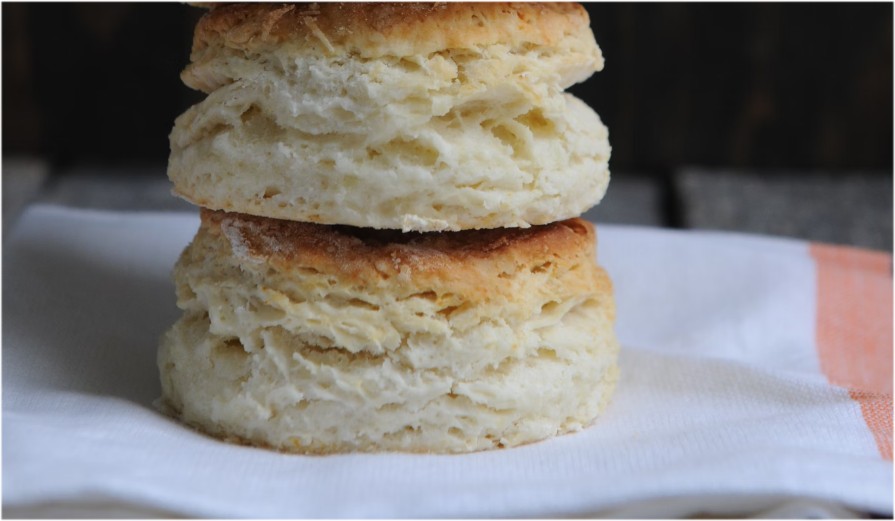Self-rising flour always seems to be that one ingredient in a recipe you don’t have stashed away in the pantry. It is called for in some recipes for pancakes and fried foods, but not so often that you can convince yourself to keep a bag on hand. Luckily, you can make self-rising flour at home using common pantry staples.
What is self-rising flour?
Self-rising flour is a pre-mixed flour blend. In addition to flour, it contains a leavener and salt – essentially, it’s a 3-in-1 ingredient. Self-rising flour was originally created as a way for British sailors to make better baked goods while at sea. Today, this humble flour blend can still mean the difference between tender, flaky biscuits, or a sad tray of golden brown hockey pucks. It gives dumplings a lofty rise, and puffs in hot oil to help form a crispy, lacy crust on hushpuppies and popcorn shrimp.
How to make self-rising flour
Making self-rising flour at home is as simple as whisking together 1 cup all-purpose flour, 1 ½ teaspoons baking powder, and ¼ teaspoon fine sea salt. Typically, store-bought self-rising flour contains a lower protein content than generic all-purpose flour, giving baked goods a tender crumb. (You might notice a very small difference when using this homemade substitute in quick breads and cakes, but it typically won’t be noticeable in fried foods.) Most baking powder sold in grocery stores is labeled “double-acting.” This simply means that the baking powder will react and create bubbles twice during the baking process – first when the powder comes in contact with a liquid, and again when exposed to heat. This foolproof measure ensures a lofty rise even when you accidentally overbeat the cake batter or take a little too long to get it in the oven.
How to use self-rising flour
Self-rising flour is a great shortcut for Saturday morning pancakes or rainy-day chicken and dumplings. It not only shortens the ingredient list, but also ensures even distribution of the baking powder for a consistent rise. However, you should only use self-rising flour in recipes that specifically call for it. Chemical leaveners – baking powder in this case – are finicky when it comes to ratios with other ingredients in the recipe. Too much can cause a baked good to quickly puff and then deflate, and too little can prevent it from rising at all. Both lead to a dense, flat undesirable result.
How to store it
Store self-rising flour in an airtight container in a cool, dark place (such as the back of your pantry). The added baking powder makes self rising flour has a shorter shelf life than other flours. Make it in small batches and use them up within a year of mixing to get the best rise.
This article was written by Paige Grandjean from Food & Wine and was legally licensed through the Industry Dive Content Marketplace. Please direct all licensing questions to legal@industrydive.com.






